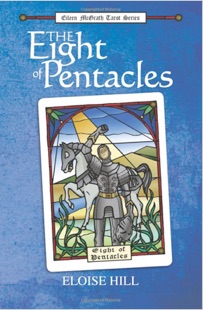(This post first appeared in Liz Fichera's Blog, which you can find here).
In her mystery-writing manual How to Write Killer Fiction, Carolyn Wheat describes the middle part of a novel as “waist deep in the big muddy.” She’s not exaggerating. When my novel The Dangerous Edge of Things reached its midpoint, the Big Muddy almost sucked me under. I had no idea what these people I’d created were up to — their motives and goals and secrets were a treacherous mucky mire. My plot was crumbling, and my book along with it.
Seeing my dilemma, a friend offered to do a tarot reading for me. I was curious, but skeptical. After all, what could a deck of fortunetelling cards accomplish that storyboards and plot outlines hadn’t?
But I was desperate. So tucking my skepticism into my back pocket, I sat across from my friend as she divined the intricacies of my novel. First, she had me shuffle the deck; then she laid out the cards in a pattern called the Celtic Cross.
“That which covers you, that which crosses,” she explained. “Above and below, before and behind.”
She tapped the first card, a calm masculine figure seated on a throne, a gleaming rapier upright in his hand. “The central conflict involves the King of Swords,” she said. “A man of strength and power and intellect, someone who holds the power of life and death in his hand. Often solitary, sometimes ruthless, but ultimately fair and objective.”
 | |
| The Justice card from Arcane Tarot by val-eithel |
I was stunned. She was describing Trey, my male protagonist, like she‘d sneaked a peek at the character synopsis. Then other cards turned up. The Queen of Cups— submerged unexpressed emotion, perhaps jealousy. The Knight of Wands — an energetic ally with charisma and passion. Justice reversed — a situation riddled with bias and prejudice. And then, in the final position, The Magician.
“It all ends with a single choice,” my friend said, “a big one, the kind of choice you have to believe in with everything you have.”
And as I stared at those cards — at the swords and wands and clear-eyed figures — I suddenly understood what my intuition had been trying to tell me all along. I’d been going at it backwards. Instead of letting the sequence of events flow from my characters’ desires and goals, I’d imposed a series of events on them. No wonder my book was drowning — I’d put a straightjacket on my characters and tossed them in the whitewater.
This is a common pitfall in the tug-of-war between the free-wheeling creativity of the subconscious and the controlled order-making of the conscious. As a writer, I understand the challenge of moving between these two modes of operation and the frustrations that occur when you can’t do it easily (writer’s block being the most common).
But this is why tarot, or any divination deck, is such an effective tool in the creative person’s toolkit — it provides a channel of communication between your conscious and subconscious minds. As your own responses to the images in the deck bubble up, you try out different scenarios, look at situations from a new perspective. Facts rub together in new ways, creating sparks.
Think of it this way — your subconscious is a vast library, with lots of information on the shelves and more coming in every day, but unless you have some way to find what you need when you need it, it can be pretty overwhelming. Tarot is like a very smart, very friendly librarian who knows you well enough to bring you exactly what you need — all you have to do is ask.
My first tarot reading was so success that I went on to become a professional tarot reader myself. I now counsel others seeking creative solutions to life’s challenges. Thanks to the cards, my soon-to-be-published novel was completed successfully. And even though my hero remains an intellectual King of Swords, I tucked a tarot deck in his desk, just to remind him that sometimes he should put away his graphs and flow charts and open himself to the mysterious powers of intuition.
(To see more of val-either's amazing art, go here).




